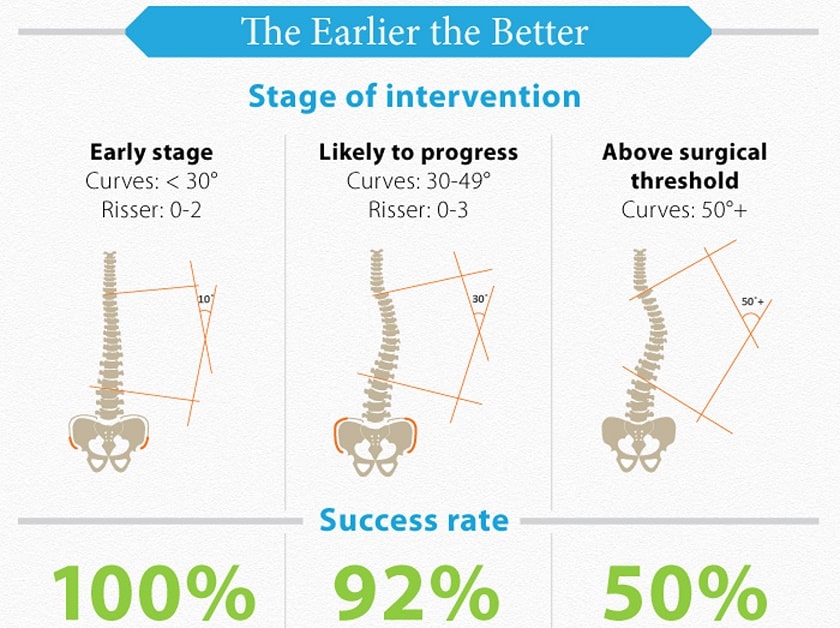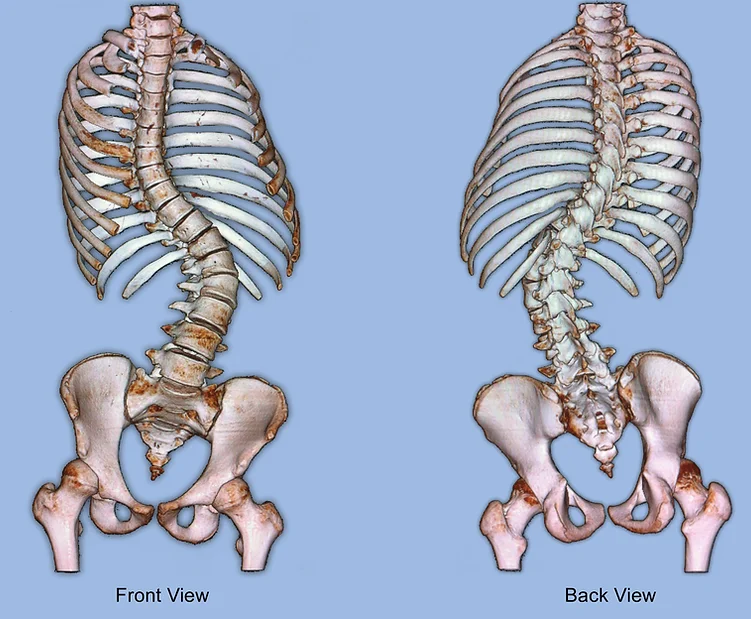Severe scoliosis is typically defined as a spinal curvature greater than 40 degrees. Diagnosis involves physical examinations, X-rays, and measurements of the Cobb angle, which quantifies the degree of spinal curvature. Accurate diagnosis is crucial for determining the appropriate course of treatment.

The Impact of Severe Scoliosis on Organ Function
Severe scoliosis can compress the chest cavity, limiting lung capacity and impairing respiratory function, leading to shortness of breath, fatigue, and increased susceptibility to respiratory infections. Additionally, the curvature can put pressure on the heart, potentially causing cardiovascular complications such as arrhythmias and heart failure.
Investigating the Risks Associated with Severe Scoliosis
Severe scoliosis poses several risks, including curvature progression, which can exacerbate complications and increase pain. The condition can lead to postural imbalances, causing muscle imbalances and chronic pain in the back, neck, and hips, and affecting overall mobility and quality of life.
Complications Arising from Severe Scoliosis
Complications from severe scoliosis can include neurological issues, such as pressure on the spinal cord and nerves, leading to numbness, weakness, or paralysis in severe cases. Digestive problems may also arise due to compression of the stomach and intestines, resulting in issues like acid reflux, difficulty swallowing, and constipation.
Surgical Interventions for Severe Scoliosis: Benefits and Risks
Surgical intervention, typically spinal fusion surgery, may be necessary for severe scoliosis. This procedure involves fusing the vertebrae with metal rods and screws to straighten the spine. While surgery can improve spinal alignment and reduce pain, risks include infection, blood loss, and nerve damage.

Long-Term Effects of Severe Scoliosis on Quality of Life
Severe scoliosis can lead to chronic pain, limited mobility, and physical deformity, impacting self-esteem and body image. Individuals may face difficulties in physical activities, leading to social isolation and decreased overall well-being. The psychological impact, including anxiety and depression, can further affect quality of life.
Mortality Rates in Severe Scoliosis Cases: What the Data Shows
Mortality rates for severe scoliosis are relatively low. According to a study published in the Journal of Bone and Joint Surgery, the mortality rate for severe scoliosis cases is approximately 0.5%. However, rates can vary based on age, overall health, and the presence of other medical conditions.
Factors Influencing Mortality Rates in Severe Scoliosis
Factors influencing mortality rates include age at diagnosis, as older individuals may face higher risks of complications and decreased health. The presence of additional medical conditions, such as heart or lung disease, and the severity of spinal curvature and treatment effectiveness also impact mortality rates.
Improving Survival Rates: Advances in Treatment and Care
Advancements in treatment and care have improved survival rates for individuals with severe scoliosis. Early detection and intervention are critical in managing the condition and minimizing complications. Non-surgical treatments like bracing and physical therapy can manage symptoms, while advancements in surgical techniques have enhanced outcomes and reduced risks.
Psychological Impact of Severe Scoliosis on Patients and Families
The psychological impact of severe scoliosis includes self-consciousness, social isolation, and decreased self-esteem for patients. Families may also experience emotional distress in supporting a loved one with the condition. Providing psychological support and resources is essential for coping with the emotional challenges.

Conclusion: Promoting Awareness and Early Intervention for Severe Scoliosis
Severe scoliosis can significantly affect health and well-being. Although mortality rates are relatively low, the associated risks and complications are considerable. Early detection, timely intervention, and effective treatment are vital for managing severe scoliosis and improving outcomes. Promoting awareness, ensuring access to healthcare, and offering psychological support can help individuals with severe scoliosis lead fulfilling lives.
References
- [1] National Institute of Arthritis and Musculoskeletal and Skin Diseases. ‘Scoliosis in Adults.’ Available at: https://www.niams.nih.gov/health-topics/scoliosis
- [2] Cleveland Clinic. ‘Severe Scoliosis.’ Available at: https://my.clevelandclinic.org/health/diseases/16860-scoliosis
- [3] Mayo Clinic. ‘Scoliosis Diagnosis and Treatment.’ Available at: https://www.mayoclinic.org/diseases-conditions/scoliosis/diagnosis-treatment/drc-20351525
- [4] Spine-Health. ‘Impact of Severe Scoliosis.’ Available at: https://www.spine-health.com/conditions/scoliosis/severe-scoliosis
- [5] American Academy of Orthopaedic Surgeons. ‘Scoliosis.’ Available at: https://orthoinfo.aaos.org/en/diseases–conditions/scoliosis
- [6] WebMD. ‘Complications of Severe Scoliosis.’ Available at: https://www.webmd.com/back-pain/severe-scoliosis
- [7] Healthline. ‘Surgical Interventions for Severe Scoliosis.’ Available at: https://www.healthline.com/health/scoliosis-surgery
- [8] MedlinePlus. ‘Scoliosis Overview.’ Available at: https://medlineplus.gov/adultscoliosis.html
- [9] Orthopaedic Foundation. ‘Scoliosis and Organ Function.’ Available at: https://www.orthopaedicfoundation.org/scoliosis-organ-function/
- [10] National Scoliosis Foundation. ‘Long-Term Effects of Severe Scoliosis.’ Available at: https://www.scoliosis.org/severe-scoliosis-effects/
- [11] Children’s Hospital of Philadelphia. ‘Severe Scoliosis Management.’ Available at: https://www.chop.edu/conditions-diseases/scoliosis
- [12] Scoliosis Research Society. ‘Scoliosis Treatment Advancements.’ Available at: https://www.srs.org/professionals/patient-care/treatment
- [13] American Association of Neuromuscular & Electrodiagnostic Medicine. ‘Impact of Severe Scoliosis.’ Available at: https://www.aanem.org/Patients/Disorders/Scoliosis
- [14] Spine Universe. ‘Survival Rates in Severe Scoliosis.’ Available at: https://www.spineuniverse.com/conditions/scoliosis/severe-scoliosis-survival-rates
- [15] Scoliosis.org. ‘Psychological Impact of Scoliosis.’ Available at: https://www.scoliosis.org/psychological-impact/

